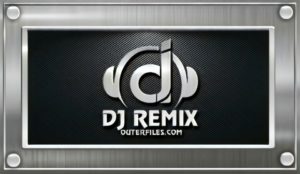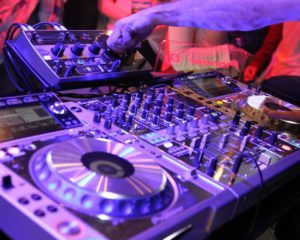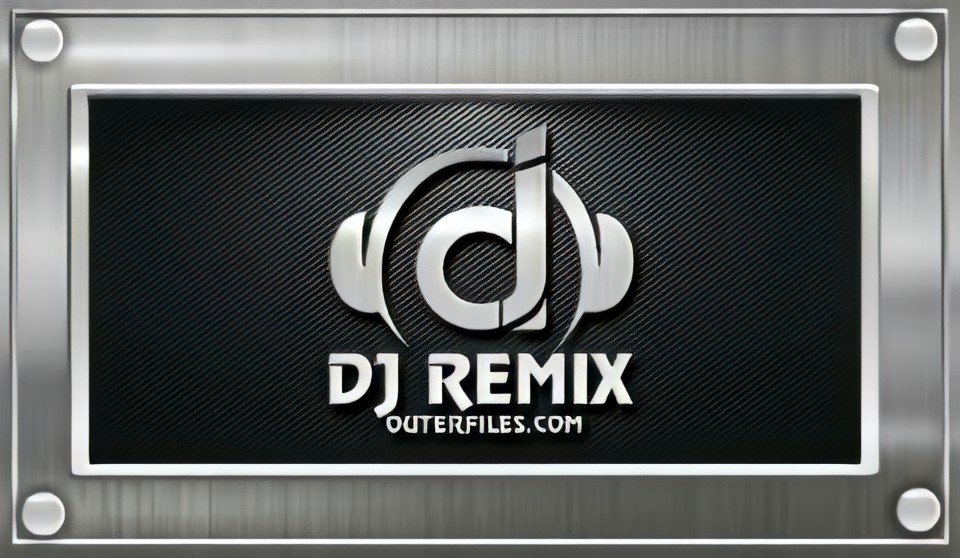How DJs Curate the Perfect Playlist: Unveiling the Art of Track Selection

Understanding the DJ’s Musical Arsenal
A skillful DJ possesses a profound understanding of their music and the audience they are entertaining. They possess the ability to gauge the crowd’s mood, enabling them to select tracks that will keep everyone on their feet throughout the night. Furthermore, a talented DJ embraces a versatile repertoire, incorporating a variety of genres to create a distinctive sound that captivates their diverse audience.
Key Factors Influencing Music Selection
Several elements contribute to a DJ’s choice of music:
-
Genre expertise: A DJ must be adept at playing various genres to cater to different crowds. While a DJ who specializes in top 40 hits may not be able to ignite a dance floor with techno or house music, a versatile DJ can seamlessly transition between genres to please any crowd.
-
Crowd mood: The energy and vibe of the crowd heavily influence the tracks a DJ selects. If the crowd yearns for a high-energy experience, the DJ will curate a playlist comprising upbeat, lively tracks. Conversely, if the crowd is winding down, the DJ may transition to slower, more relaxed songs to match the ambience.
-
Venue ambiance: The setting or event type also plays a significant role in track selection. DJs performing at clubs aim to keep the dance floor packed, so they opt for music that ignites the party atmosphere. Conversely, DJs at weddings often focus on sentimental tracks, creating a specific ambiance that resonates with the celebration.
Crafting the Perfect DJ Set

DJ sets encompass a thoughtfully planned combination of tracks that gradually build energy and reach a climax towards the end. DJs consider several crucial factors when choosing songs for their sets:
-
Genre compatibility: Ensuring a seamless transition between tracks, DJs meticulously select songs that harmonize with the overall genre of the set.
-
Set mood: A DJ strategically curates tracks based on the desired mood for the set. By carefully selecting songs that evoke specific emotions, DJs can create a captivating atmosphere that resonates with the audience.
-
Crowd energy: Reading the energy levels of the crowd allows DJs to adjust their song selection accordingly. They choose tracks that align with the crowd’s energy, ensuring a continuous connection and an unforgettable experience.
-
Event or venue context: The nature of the event or venue heavily influences the DJ’s choice of music. DJs tailor their sets to satisfy the specific requirements and ambiance of the setting, ensuring a memorable experience for the attendees.
By considering these factors, DJs seamlessly blend different genres and tempos, captivating the audience, and keeping them dancing throughout the night.
The Art of Legal Music Selection

DJs have various legal methods to play the music they desire:
-
Public domain tracks: DJs often utilize tracks classified as “public domain” that are not protected by copyright law and can be used freely by anyone.
-
Licensed tracks: DJs can purchase licenses from copyright holders, granting them the legal right to publicly play specific tracks.
-
Remixing and sampling: DJs create their own music by sampling and remixing existing tracks. As long as the original track is not identifiable in the new creation, DJs can produce music without infringing on copyright laws.
Choosing the Perfect Gig Setlist: Tips and Tricks

Crafting an ideal setlist relies on understanding the gig and the desired atmosphere. While there is no one-size-fits-all approach, here are some useful tips to help you select the perfect setlist for your next performance:
-
Set the tone: Determine the overall mood you want to establish. Are you aiming to ignite the crowd with high-energy tracks or create a more relaxed and laid-back ambiance?
-
Consider the venue: Assess the acoustics and characteristics of the venue. Decide whether your song selection will be enhanced by amplification or if acoustic tracks will better cater to the venue’s vibe.
-
Maintain diversity: Keep the audience engaged by incorporating a healthy mix of fast and slow songs, old and new hits, and diverse genres into your setlist.
-
Embrace experimentation: Be bold and willing to take risks. Test out new tracks and observe the crowd’s reaction. You might be pleasantly surprised by the positive response.
The ABCs of DJ Jargon: Decoding the Language of the Trade
Beatmatching
Beatmatching is a technique DJs employ to synchronize the tempo of two tracks seamlessly, ensuring a smooth transition without disrupting the music’s flow.
EQing
EQing refers to adjusting the frequency levels of a track to achieve the desired sound. DJs can manipulate bass, treble, and other frequency components to create specific audio characteristics.
Sampling
Sampling involves extracting a small portion of one track and incorporating it into another composition. DJs often sample other songs to create fresh beats or catchy hooks for their own tracks.
Remixing
A remix is a reimagined version of a song with added elements such as new instrumentation, beats, or vocals. DJs and producers use remixes to bring unique interpretations to existing tracks.
Edit
An edit is a shorter version of a song, often with shortened verses or chorus sections. Edits retain the original track’s vocals and instrumentation while making it more concise and radio-friendly.
Original Mix
An original mix is a track created from scratch by a DJ or producer. It may incorporate samples from other tracks while maintaining a unique structure and sound.
Unlocking the DJ Universe
The DJ world is home to a myriad of terminologies that can be overwhelming for newcomers. Here are some common DJ terms demystified:
-
IDM: IDM stands for Intelligent Dance Music—a genre characterized by complex rhythms, detailed production, and intricate melodies.
-
Glitch Hop: Glitch Hop combines elements of hip hop and IDM, often featuring dirty, distorted basslines and glitchy sound effects.
-
Sample Rate: A track’s sample rate refers to the number of times audio is sampled per second. Higher sample rates offer better audio quality but occupy more disk space. The industry standard is 44.1 kHz.
-
Bit Depth: A track’s bit depth determines the number of bits used to represent each audio sample. Higher bit depths offer superior audio quality but consume more disk space. The standard bit depth for audio files is 16 bits.
-
Plugin: A plugin is software that extends a program’s functionality. DJ software often incorporates plugins that add new instruments, effects, or loops to tracks.
-
VST: VST (Virtual Studio Technology) is a plugin format widely used in DJ software. VST plugins enhance tracks with additional instruments, effects, or loops.
-
MP3: MP3 is a compressed digital audio file format that allows easy sharing and playback on various devices.
-
WAV: WAV is an uncompressed digital audio file format renowned for maintaining high-quality audio, commonly used for music tracks.
-
AIFF: AIFF (Audio Interchange File Format) is another uncompressed audio file format suitable for high-quality music tracks.
-
FLAC: FLAC (Free Lossless Audio Codec) provides lossless audio compression, preserving sound quality while reducing file size. FLAC is prevalent in high-quality audio files.
-
AAC: AAC (Advanced Audio Coding) is a compressed audio file format commonly used for music tracks.
-
Ogg Vorbis: Ogg Vorbis is a lossy compressed audio file format that sacrifices some audio quality to achieve smaller file sizes. DJs often use it for music tracks.
-
ALAC: ALAC (Apple Lossless Audio Codec) offers lossless audio compression, maintaining high-quality audio without significant file size reduction. ALAC is popular for high-fidelity music tracks.
-
Cue Point: DJs use cue points as markers to indicate specific sections of an audio file during performances, facilitating quick navigation.
-
BPM: BPM (Beats Per Minute) measures the tempo of a track—a higher BPM indicates a faster tempo. DJs utilize BPM to synchronize tracks and maintain consistent energy levels.
-
Beat Grid: DJs employ beat grids—an alignment tool—to ensure precise beat matching between tracks, enabling smooth transitions.
-
Hot Cue: Similar to cue points, hot cues allow DJs to swiftly locate specific sections of a track during live performances.
-
Loop: A loop is a repeated section of audio, often utilized by DJs to create a continuous, uninterrupted flow of music.
-
Sampler: A sampler is hardware or software that plays back recorded sounds, providing DJs with additional textures and sounds for their tracks.
-
Serato Scratch Live: Serato Scratch Live is DJ software designed for controlling vinyl turntables or CDJs, enabling DJs to perform scratching and seamless track mixing.
-
Ableton Live: Ableton Live is a versatile software program widely used for music production and live performances by DJs and producers.
-
Mixer: A mixer is hardware or software that blends multiple audio signals, allowing DJs to mix tracks together seamlessly.
Conclusion

DJing is a captivating art form that revolves around the carefully curated selection of tracks. DJs possess an innate ability to read the crowd, accommodating their musical preferences and desires. By skillfully blending genres, gauging the energy levels, and adapting to venue specifics, DJs create a remarkable musical journey for their audience. Behind the scenes, legal considerations, such as licensing and sample manipulation, ensure that DJs can explore their creativity while respecting copyright laws. So, the next time you find yourself immersed in the magic of a DJ’s performance, take a moment to appreciate the intricate process and dedication it takes to curate the perfect playlist.
Read more:

